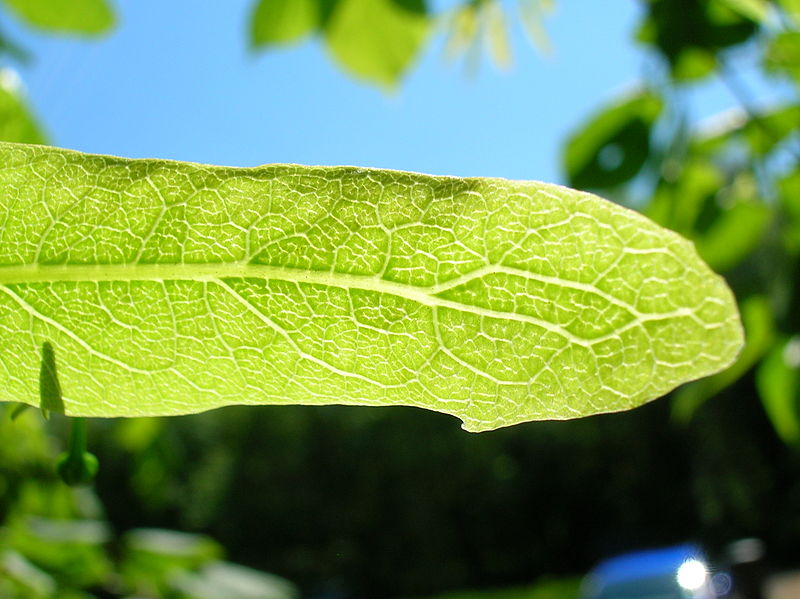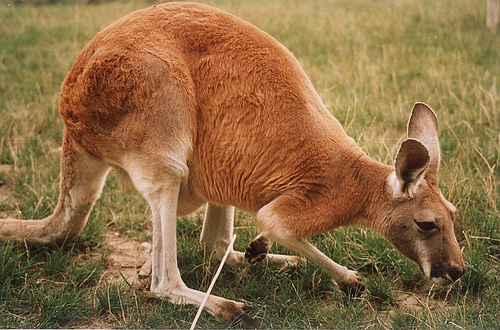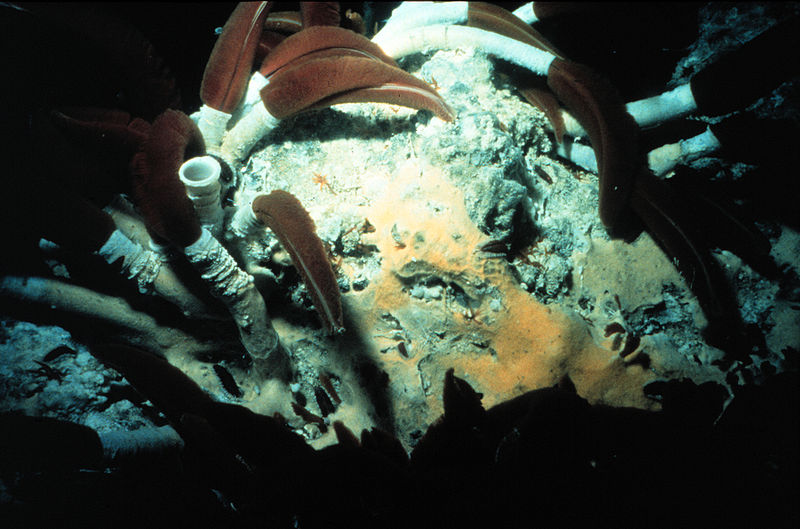Two apologies must be made. First: the title is a lie, I’m sorry. There are no power levels in this little essay because there’s no power. Not enough power to fuel a toaster oven. There WILL, however, be energy, power’s close cousin, and we will be organizing it into levels. Trophic levels.
Second: this is going to be a bit short because I’ve got a final and then work and then another final over the next couple, so I’m a tad pressed for time at the moment.
Okay. Energy! Energy as pertaining to life on earth, more specifically. It has to come from somewhere, because energy doesn’t exactly create itself. Where’d your energy come from? Well, the last thing you ate, which got it from…uh, let’s start at the other end of the scale. Go through this from bottom to top. We’ll start where the energy comes from, and wing it from there.
I: The Sun
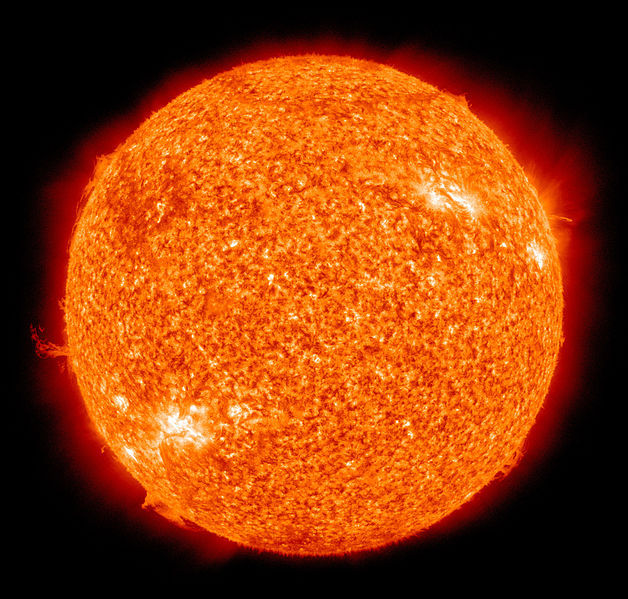
This is your star. There are many like it, but this one is yours and also slightly below-average in all significant respects.
This is where energy comes from. Well, that was easy to explain.
Unfortunately, most of the sun’s energy gets shot out into the blank and unfriendly void of space where it fizzles out and does jack for us. A bunch of old libertarian novelist nerds in the 70s had very strong opinions about building a big sphere around the sun to fix this wastefulness, but unfortunately that’ll have to wait until we’ve got the tech to disassemble most of the solar system for raw materials, by which point we’re probably smart enough that we’ve broken the laws of thermodynamics over our knees and no longer give a hoot.
Anyways. An infinitesimally small chunk of sunlight reaches earth. A bit of it – the wavelengths that aren’t too short, that aren’t too long – gets through the atmosphere. And then most of it splatters on a rock somewhere (or more likely, a wave) and does nothing.
About 1-2% of it impacts a plant.
That’s the important part for almost all life on earth.
II: The Primary Producer – the Autotrophs
The plant, of course, being living, does what any of us would would with a windfall: it squanders that shit. The plant blows anywhere between 15-70% of its solar energy sweepstakes on personal maintenance (paying the biological bills so its cell walls don’t disintegrate and its DNA doesn’t unzip every time it respires in a northerly wind) and tucks the leftovers into production: making energy into more plant. It’s a classic libertarian feel-good story of a plucky individual succeeding against all odds by almost no merit of its own but for dumb luck. That’s what makes plants the producers: the transformers of your solar energy into organic matter. You can also call them autotrophs; automatic-nourishing little buggers, the first trophic level of the trophic pyramid and by far its widest and most populous level (you can also call them photoautotrophs if you wish to be fancy: light-automatic-nourishing) They harvest what’s floating free in the air and turn it into nice shit to call their own.
Unfortunately, the first fact of having nice shit is that other people notice. And many of them will be bigger than you.
III: The Primary Consumers – the Heterotrophs
That 1-2% of sunlight producers tap into is a tiny, tiny trickle of what’s available, and they use up most of its energy just to stay alive. But 85-30% of 1-2% of the energy of all sunlight impacting the earth is still a pretty honkin’ good chunk of energy. And it’s all sitting there inside those producers, and sooner or later SOMEbody’s going to take a crack at it. And by somebody I mean herbivores. Your white-tailed deers, your grasshoppers, your chipmunks. All the guys that love their greens (and browns, and greys, and…well, different plants and different plant bits come in different colours, is what I’m saying). These guys can’t make their own energy, they have to consume it, stripping it straight from the delicious producer. That explains primary consumer, and as for heterotroph, well, apply a little knowledge. “Different-nourishment.” They don’t automatically nourish themselves, they get their energy differently. By ripping it off the primary producer.
Only 5-20% of the energy stored up in the primary producers makes it through the digestion process and gets used to produce more primary consumer – breaking down plant tissue isn’t easy, and it isn’t efficient. But what’s left is more than enough to keep a reasonably decent population of plant-eating, leaf-scarfing, twig-munching leeches alive, forming a smaller but still sizable second trophic level on the trophic pyramid. The bastards.
There is another fact: there will always be a bigger bastard.
III: The Secondary Consumers – also the Heterotrophs
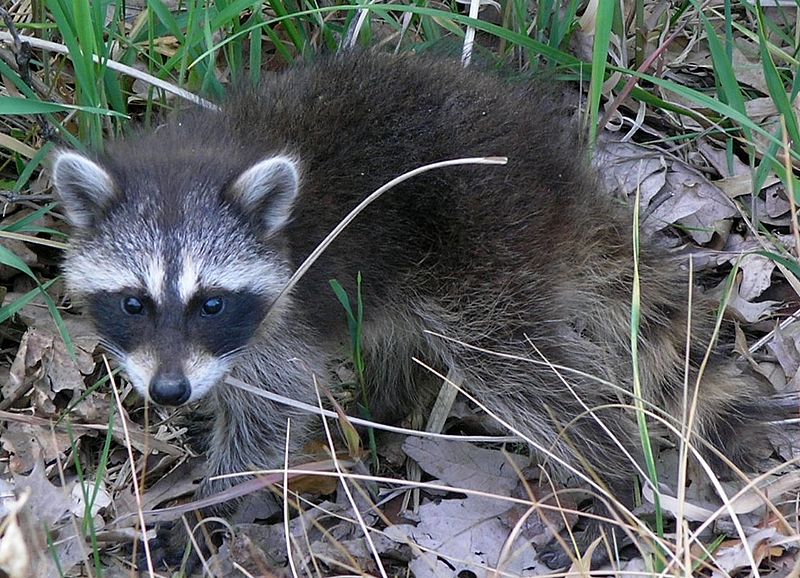
Like most omnivores, surprisingly adorable until it overpopulates and eats everything and runs the planet into a mass extinction event because it won't stop burning carbon. Still cute though.
The bigger bastard in this case is the one that eats the one that eats plants. The consumer of the consumers. The secondary consumer, if you will. Unfortunately it doesn’t get a special ‘troph’ name because heterotroph sort of covers everything that isn’t an autotroph, so it has to share. Them’s the breaks. Secondary consumers also includes most omnivores, the greedy bastards that can’t make up their minds and want to exploit both the producers AND consumers at the same time. It’s worth noting that yet AGAIN, despite all a digestive system can do (even including the fact that meat’s much easier to digest than vegetable matter, being in a sort of pre-processed format, like a microwaveable dinner), only 5-20% of the energy from the previous trophic level (the primary consumers) makes it to this one, with the bulk of it getting used up to keep the primary consumer running smoothly. This means that the secondary consumers make up a substantially smaller trophic level on the pyramid than their food items. Deja vu.
Remember that last fact I told you? Repeat it.
IV: The Tertiary Consumers – also, also the Heterotrophs
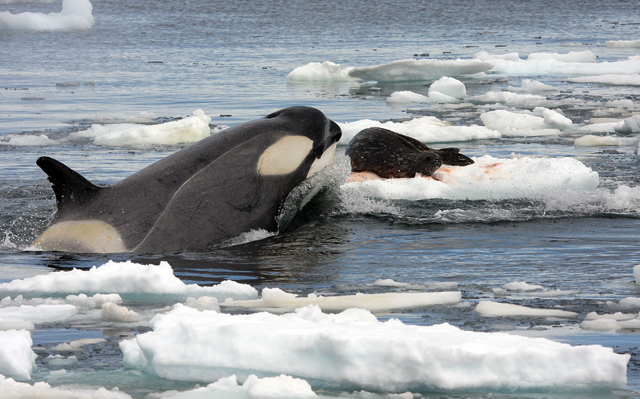
And yet if it was eating a fish we'd all think it was cute, especially if it got a belly rub out of it.
The biggest bastard’s problem usually isn’t that someone else will eat him – at least, not once it’s fully-grown. No, usually the tertiary consumer‘s biggest cause of death is starving because it can’t eat enough OTHER people. These are the orcas, the sperm whales, the polar bears, the Siberian tigers, the predacious diving beetles, the golden eagles, the Tyrannosaurus rexes. Sure, they’ve got the tiniest amount of energy to deal with since their energy’s passed through a minimum of two separate sieves before it gets anywhere near their plates, but they look good on t-shirts. From their miniscule-sized trophic level they look down the rest of the trophic pyramid and survey its contents like kings, secure in the knowledge that the energy buck stops at their desks and in their guts.
V: BUT WAIT! – the detrital food chain
You probably recognized the above as a good ol’ fashioned food chain with fancy words like ‘troph’ slapped willy-nilly. And it is! And you probably realize that in real life food chains are complex, and most trophic levels interact with a bunch of others below them, not just their immediate neighbours. They do!
What you DIDN’T know was that this is but one of two types of food chain! AHA! I bet you didn’t see that coming, eh?
(Important note: if you did see this coming feel free to assume the position of delivering the above sentence to everyone around you)
The standard/grazing food chain, which we just sort of went over, is everywhere we look in nature. What lurks behind it at every corner is its shadowy evil twin: the detrital food chain!
It’s actually really simple and stupid: basically, the entire grazing food chain (relatively biggest animals, based upon plant bits) gets consumed at every single trophic level by the relatively small and often microscopic denizens of the detrital food chain. Primary producers and tertiary consumers, shed leaves and sperm whales, it all ends up getting chewed into a pulp and spat out sooner or later. Mostly later, once something else has finished spitting it out first.
SHOCKING SURPRISE TWIST CONCLUSION!: There’s another path to energy!
So. Energy comes from the sun, right? The only way to get organic matter made is to milk that good ol’ fashioned sunlight, right? All hail the life-birthing sun and pass the obsidian knife, let’s build us some (trophic) pyramids?
That was an okay point of view to hold up until the 70s, at which point people found out about hydrothermal vents.
The long and the short of it: little hot spots in the earth’s crust located undersea where tectonic plates meet create upwellings of dissolved, searingly-hot minerals that billow out from vents in black and white clouds at impossibly huge depths of the ocean – black and white smokers. Some of the ridiculously nasty chemicals that come out of those vents are chock full of tasty, gut-wrenching minerals that contain too much sulfur to be reasonable.
But of course, where there is something gross, there is always something that will eat it. Specifically, chemotrophic bacteria. Even more specifically, chemoautotrophic bacteria. Screw the sun, these little bold-as-balls bastards are making organic matter out of pulverized continental crust waste products at the bottom of the ocean in absolute darkness. And where there’s nice shit – life – there is also that which would take it from you: bastards. Where there are producers (chemoautotroph or phototroph), there will be consumers. And secondary consumers. Nests of tube worms, terrifying scuttling clabs, big ol’ shellfish. Life without light, living on a tiny tether that can snap with just a bit of shifting rock or a clogged vent, leaving them all to starve to death. Comfy and reassuring, but very wonderful. Remember: there is no rock so nasty that something won’t fight and die for the chance to live under it.
And just think. This is probably the energy source that your ultimate grandmother was raised on.
Picture Credits:
The Sun: Public domain image from Wikipedia.
Tilia Leaf: Public domain image from Wikipedia.
Red Kangaroo: Public image domain from Wikipedia.
Raccoon Kit: Public domain from image Wikipedia.
Fiddler Crab: Public public image from Wikipedia.
Tube Worms: Imagepedia publiWikic dofromain.
